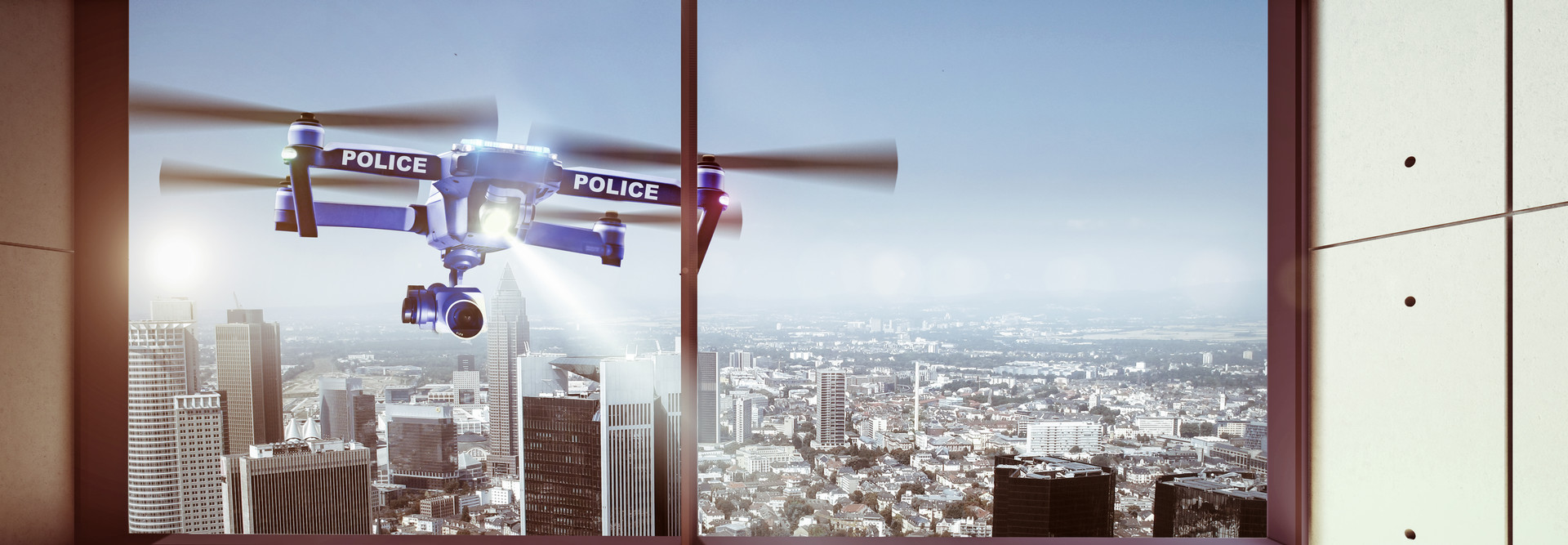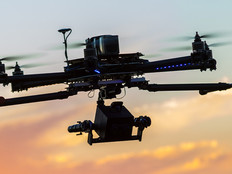What Is Needed for UAS/Drone Training for Public Safety Agencies?
Drones, formally known as unmanned aerial systems, have proliferated rapidly across the public safety community in the United Sates.
According to a May 2018 report from Bard College’s Center for the Study of the Drone, at least 910 state and local police, sheriff, fire, and emergency services agencies in the U.S. had acquired drones as of the report’s publication.
Notably, the center estimated that the number of public safety agencies with drones had increased by around 82 percent in the last year prior to the report’s publication. “All told, there are now more than twice as many agencies that own drones as there are agencies that own manned aircraft in the U.S.,” the report states.
As StateTech has reported, “cities, counties and state governments turn to drones to help fight crime, combat fires and assist in rescue efforts.” However, public safety agencies cannot simply go out and purchase a fleet of drones. They need to abide by federal and state UAS regulations and engage in proper drone training.
Drone Regulations for Public Safety to Know About
According to a report released in August from DRONERESPONDERS, a nonprofit dedicated to helping public safety programs navigate drone technology challenges, 3 out of 4 public safety agencies claim they are already either operating drones or working on implementing a UAS program.
However, the report, which included survey responses from 288 public safety professionals, found that there are several key challenges still facing public safety UAS operations.
“Among them were a lack of standardized training and procedures for public safety remote pilots, a need to continue to adopt professional aviation decision making and risk management standards, improved understanding of operations within the National Airspace System, and greater proficiency at managing UAS data and producing actionable intelligence for incident commanders,” a press release says.
Some public safety agencies choose to hire drone pilots certified by the Federal Aviation Administration to conduct operations for them. However, the FAA notes, if agencies want to conduct their own drone operations or create a program with multiple pilots and drones, they need to know some key drone regulations.
They can designate individual members of the agency to earn FAA drone pilot certificates and fly under the rules for small unmanned aircraft systems, or sUAS.
The sUAS rule that most drone pilots operate under is commonly known as Part 107 after the designated section of the federal code. Part 107 allows operations of drones weighing under 55 pounds at or below 400 feet above ground level for visual line-of-sight operations only.
Alternatively, public safety agencies can fly under the statutory requirements for public aircraft (49 U.S.C. §40102(a) and § 40125). They can receive an FAA certificate of authorization (COA) to function as a “public aircraft operator” that can self-certify its drone pilots and drones.
MORE FROM STATETECH: Discover the operational benefits of cutting-edge public safety tech.
Public Safety Drone Training
According to the FAA, in order to fly a drone under Part 107, pilots must obtain a “Remote Pilot Certificate” from the agency, which demonstrates that the user understands “the regulations, operating requirements, and procedures for safely flying drones.”
To become a pilot, users must be at least 16 years old; be able to read, speak, write, and understand English; be in a physical and mental condition to safely fly a drone; and pass the initial aeronautical knowledge exam.
That exam covers a wide range of topics, including applicable regulations relating to small unmanned aircraft system rating privileges, limitations, and flight operation; airspace classification and operating requirements, and flight restrictions affecting small unmanned aircraft operation; aviation weather sources and effects of weather on small unmanned aircraft performance; small unmanned aircraft loading and performance; emergency procedures; and crew resource management.
It also covers radio communication procedures; how to determine the performance of small unmanned aircraft; the physiological effects of drugs and alcohol; aeronautical decision-making and judgment; airport operations; and maintenance and preflight inspection procedures.
MORE FROM STATETECH: Discover how public safety agencies use video wall technology.
How UAS Training Programs Help Law Enforcement
Integrating drone public safety requires not just adherence to FAA requirements and the purchase of the proper drones, but also advanced training. Without proper training, public safety agencies will not be able to effectively use the drones they purchase and the investment will be for naught.
“It could be more of a challenge than you would expect and unfortunately, many agencies, early on, have tried the plug-and-play approach that resulted in frustration, wrong purchases, and a drone sitting in storage collecting dust,” Pittsburgh-based Steel City Drones Flight Academy notes on its website. “Today, many agencies are realizing that the best way to get their drone program off the ground is to enlist the help of a professional drone training service. A training service can help you create a customized program for your agency.”
Skyfire Consulting, which conducts drone training for law enforcement, notes that any law enforcement drone training program should include as many of the following elements as possible:
- An understanding of the different types of airspace, and how users can and cannot operate within them
- Aviation weather, weather products, and how they apply to UAV flight
- Basic understanding of drone equipment, regular maintenance and repairs
- Understanding the medical factors that may contribute to a pilot’s ability or inability to operate a drone safely
- Aeronautical decision-making skills
- Understanding airport environments, and how to operate safely near them
- Radio communications and the air traffic control system
- Actual flight techniques, checklists and emergency procedures
- FAA policies, procedures, reporting requirements and documentation
- An understanding of what a COA is, and how to operate safely under one
- An understanding of how to develop policies and procedures for the public safety agency
Law Enforcement Drone Policy
According to PoliceOne, several of the limitations contained within the Part 107 rules “can be relaxed by applying for, and being granted, a waiver by demonstrating your operation meets or exceeds prescribed safety standards.”
Those safety standards can be found at the Request a Part 107 Waiver or Operation in Controlled Airspace page on FAA’s UAS website.
It usually takes months for the FAA to approve requests, according to PoliceOne.
“Additionally, depending on your agency’s location or jurisdiction, obtaining airspace authorization to access locations near an airport can take longer than waivers, although new technologies are being developed to provide more timely approvals,” the publication notes.
The main benefit of a public safety agency achieving a Part 91 COA over Part 107 is “the ability for more flexible operations, especially when near an airport or in controlled airspace,” according to PoliceOne.
“The applicant’s entire program is considered when applying for this authorization, including how the pilots will be certified, operating environments, and procedures for obtaining access into airspace with local air traffic facilities,” the publication states. “The thought of having an entire program approved can be enticing, versus the piecemeal approach that Part 107 can seem at times. However, this process can be extremely lengthy — especially when waiting for the Public Declaration letter to be approved.”
According to the FAA, laws traditionally related to state and local police power — including land use, zoning, privacy, trespass and law enforcement operations — generally are not subject to federal regulation.
Some examples include a requirement for police to obtain a warrant prior to using a UAS for surveillance, specifying that a UAS may not be used for voyeurism, prohibitions on using a UAS for hunting or fishing, or to interfere with or harass an individual who is hunting or fishing, and prohibitions on attaching firearms or similar weapons to a UAS.









